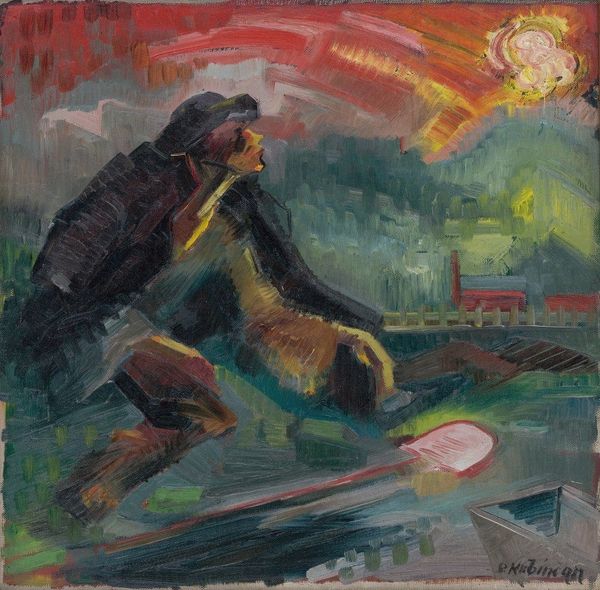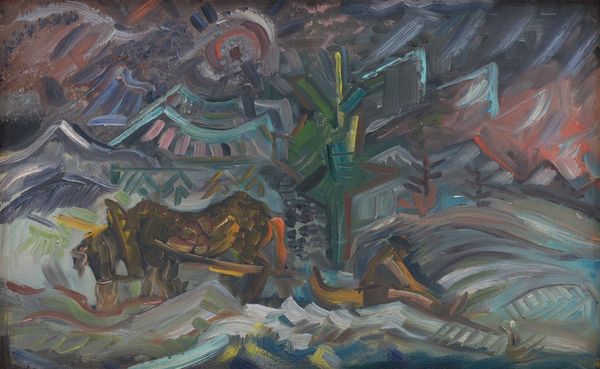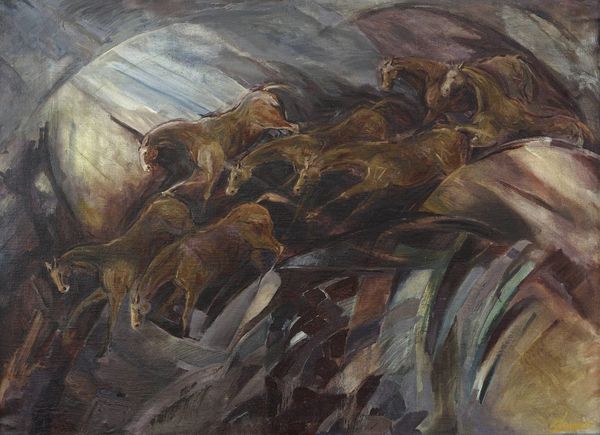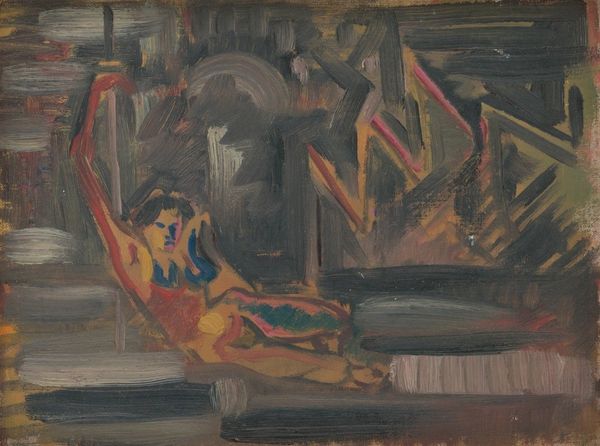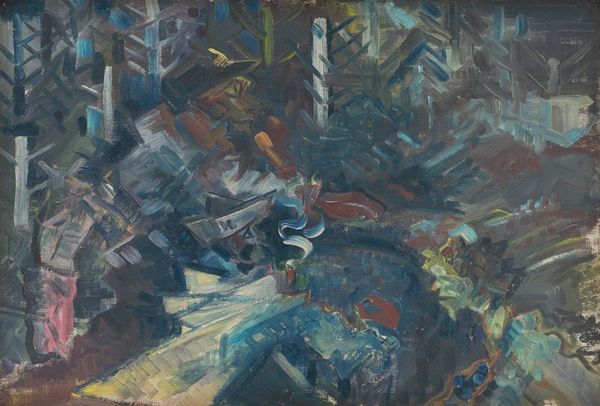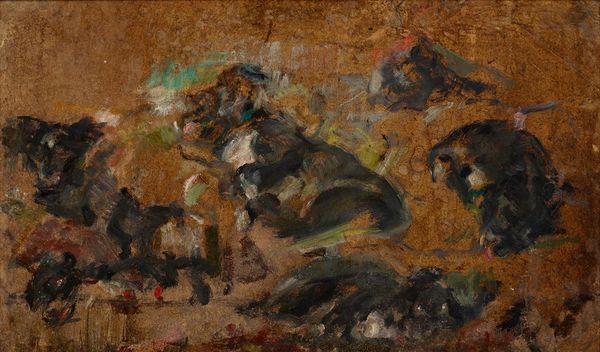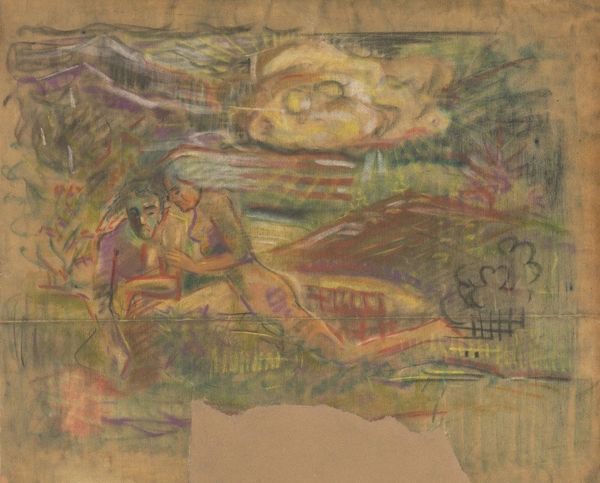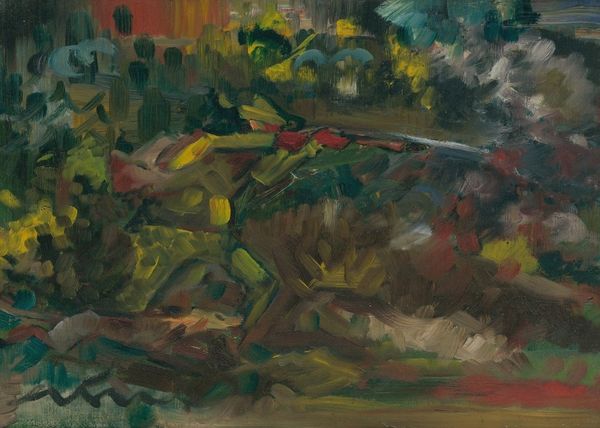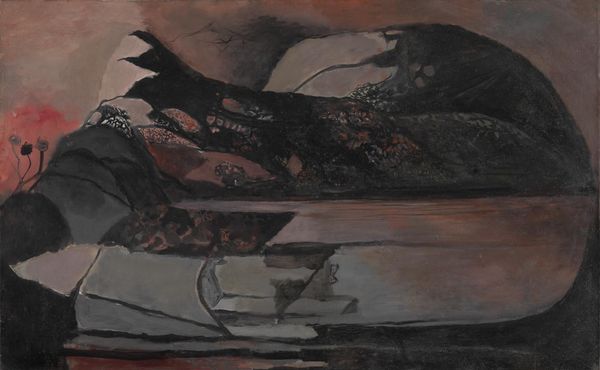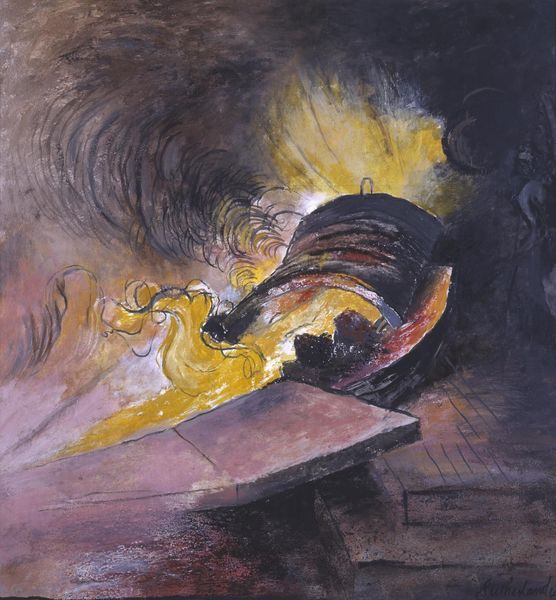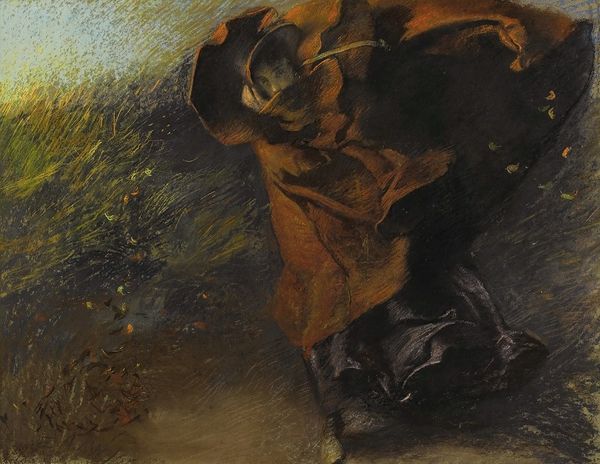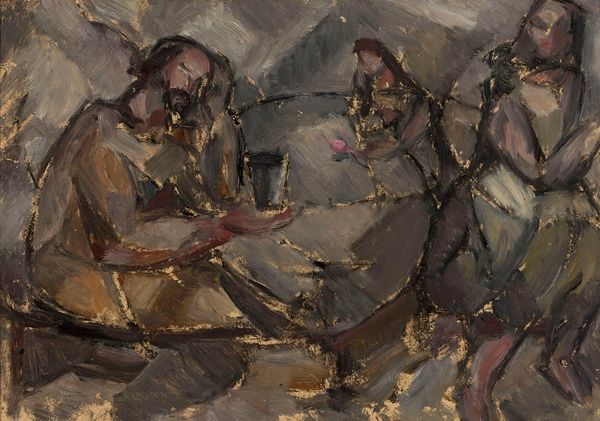
Copyright: Public Domain: Artvee
Editor: Here we have Arnold Peter Weisz-Kubínčan’s “Boar Hunt,” painted in 1940 using oil. The first thing that strikes me is how chaotic it appears. What do you see in this piece, looking at it from a purely visual perspective? Curator: Immediately, my attention is drawn to the dynamism created by the artist's application of paint. Note the thick, almost frantic brushstrokes used to construct the figures and landscape. There's a tension created by the near-abstracted forms. Consider how the artist manipulates color. Editor: You’re right; there's a stark contrast between the muted, earthy tones and those sudden, bright strokes of orange. Why do you think he contrasted like this? Curator: This deliberate contrasting generates a disquieting feeling, amplifying the scene's inherent violence. Furthermore, the lack of precise figuration invites speculation. Ask yourself, does the artist intend to capture the literal likeness of the hunt, or rather its primal, chaotic essence? How does that formal decision contribute to its meaning? Editor: So it's the tension between representation and abstraction, amplified by the colour palette, that is really generating the artwork’s meaning. Curator: Precisely. And don't overlook how the artist’s choices regarding line and form can express a more visceral, less descriptive experience of the boar hunt. Editor: That gives me a lot to consider. I will be sure to focus on how abstract form plays in his expression. Thank you! Curator: It's been a stimulating conversation. The careful analysis of form offers, always, invaluable insight.
Comments
No comments
Be the first to comment and join the conversation on the ultimate creative platform.
